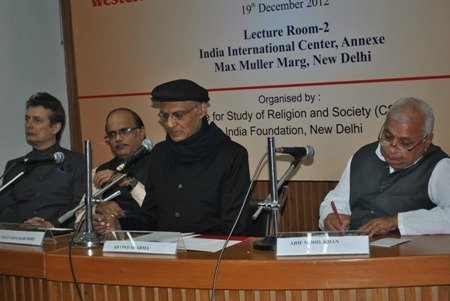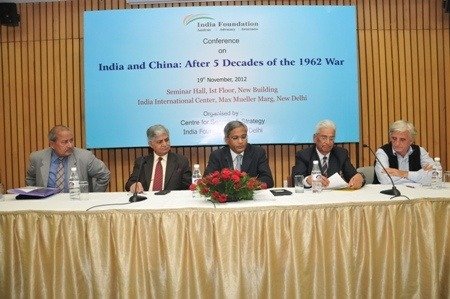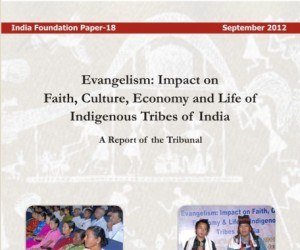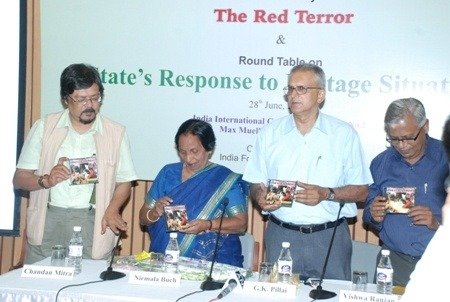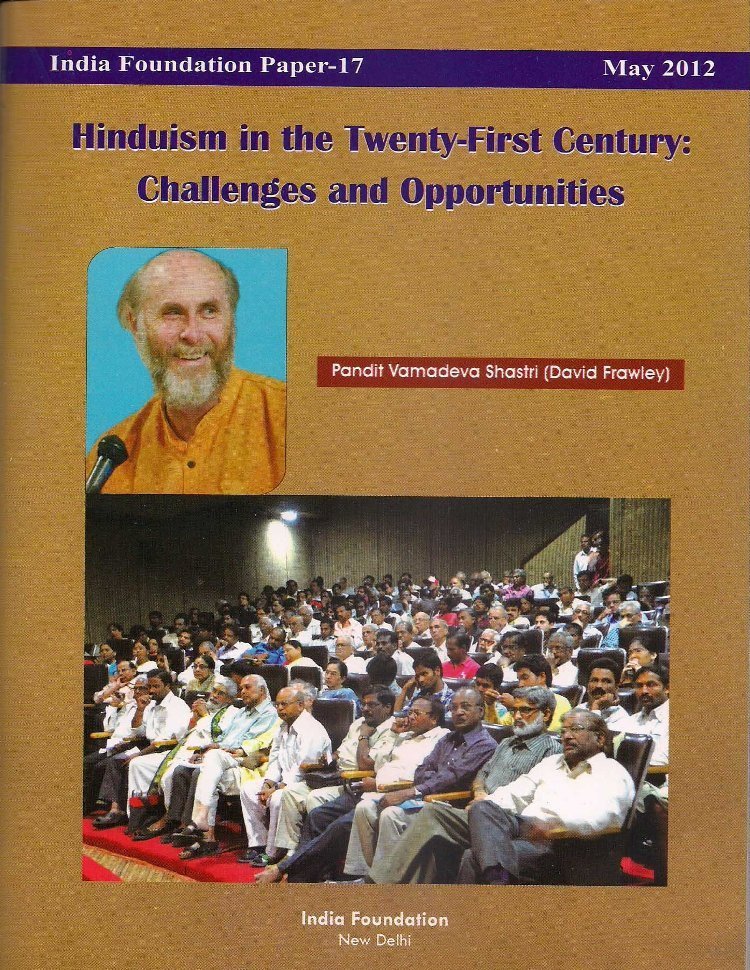It is universally felt that all is not well with the present day thoughts and practices in the sphere of economics engulfing the entire world in a severe crisis and therefore this calls for serious thinking as to what ails the prevailing states of affair and how to rectify the root causes of the problems facing the humankind. In view of urgency of the situation apparent symptoms are to be attended and curative measures are to be adopted. But it is imperative to go to the root causes and undertake preventive and positive measures This necessitates rethinking about economic principles, policies, planning and programs.
This paper has limited concerns and stems from the disillusionment with the dichotomous, exclusivist and lopsided economic situations that obtain in the modern world and outlines a brief sketch of economic system as per the Indian Buddhist approach to structure and manage economy at the national and global levels. It is hoped that the classical Indian thought can possibly offer an effective and more beneficial alternative to the present day individualistic-materialistic-consumerist-profit seeking-competitive-exploitative economy which is bereft of welfare contents, sustainability of economic resources and spiritual orientation.
The motivating factor in presenting this paper is that if we possess something which may prove helpful and useful to world peace, progress and plenitude, we should not hesitate in sharing it with the world at large. Rather than being burden to the world or being idle spectator to the universal suffering or feeling shy in sharing cultural heritage with others, we should attempt to partake in cooperative endeavor to resolve the problems of the world and creatively reconsider what our ancient culture, civilization and traditions can contribute to the present world for a bright future, as Pandit Jawaharlal Nehru always emphasized.
There should be no denial of the fact that the inquisitive mind is looking for a redeeming knowledge. The western economic thought seems to have reached a point of saturation resulting in a global economic turmoil. Therefore it calls for a bold initiative for paradigm shift for which some directions can come from the classical Buddhist thought. The Buddhist approach is that of a moderate economy based on ‘Buddhist Middle Path’ which is sustainable both in production and consumption that are the two aspects of economic planning and development. The Buddhist way is an economy of balanced development, balancing different pairs like production and consumption, individual and society, nation and universe, physical and spiritual, present and future and so forth. It is holistic and integral approach to economic issues from micro and macro perspectives, which measures development in terms of prosperity, health and happiness of the present and the future generations in terms of intra-generational and inter-generational justice. It provides for a cosmos-friendly economy in which instrumental and intrinsic goods are put in a symmetrical and balanced harmony. It is an economy of compassion and communion, of peace and non-violence. Full details can be worked out on the basis of the seminal ideas presented here, as only a blueprint is provided at this juncture for perusal of concerned and interested scholars.
Buddhism is both a view of reality and a way of life seeking to realize the summum bonum of existence. It has therefore an all comprehensive perspective on all facets of reality and life. Its understanding of economic aspect of our life has something fresh, unique and of great contemporary relevance and may serve the need for a desirable alternative model at the national and global levels. It attends to all the four drivers of economic development, viz., human resources, natural resources, capital resources and innovative technology. Though it has not been presented very systematically in the classical Buddhist literature, it can be reconstructed from the discourses of the Buddha with rulers of his times contained in the early Buddhist literature supplementing this with other classical literature and given a coherent shape. Buddhist Economy is based on and can be derived from the teachings of Lord Buddha in the well known Dhammacakkapavattanasutta in which the ‘Four Noble Truths’ and the ‘Eight-fold Noble Path’ contained in them are propagated. But in the Pali texts we get sufficient material for constructing an economic theory.
Buddhist Economy is essentially characterized by love and compassion, benevolence and altruism, interdependence and interrelation, mutual openness and reciprocity, fellowship and participation, plenitude and happiness, giving and renouncing, caring and sharing. The four noble virtues for ideal human conduct named as Brahmaviharas (global virtues) of universal friendship and amity (maitta), universal compassion (karuna), universal responsibility making others happy (mudita) and indifference to narrow self-interest (upeksha) are the guiding principles on which economic thought and planning and economic behavior of individual and society are to be based. It is an integral and organic approach which is holistic and non-divisive and takes into its purview well being of the entire cosmos (lokanukampaya). Morality and universal responsibility are the very heart of Buddhism and therefore Buddhist economics is dharmic (ethical) being guided by virtuous mind (kusala citta). It can be described as dharma-oriented and dharma-based economy. Its motto is morality first, money thereafter. Morality is not a policy but a principle of life and existence. There are three facets of dharma; it is sustaining, it is regulating and it is instrumental for good. Prajna(wisdom) and Sila (morality) as karuna (compassion) are the two foundations on which it rests. Economics like other human pursuits are only the means and its ultimate goal is cosmic well-being and happiness (bahujana hitaya, bahujana sukhaya) leading to realization of summum bonum of life (nirvana).
One of the most significant implications of the Buddhist non-substantiality view (Anatmavada) of Reality is that the cosmos, rather the cosmic process, is a totality of fleeting occurrences and not of things. It is a highly complex, complicated and intricate but planned and purposive networking of events and not a mechanistic arrangement of preexistent entities. Every worldly existence has a dependent origination out of a causal collocation characterized by mutuality and openness, interrelatedness and reciprocity. Each one depending upon ones nature has a specific nature, place, role and function in the cosmic setup as determined in the scheme of the universe. Human existence is not in isolation with the rest of the universe. It is not in the form of just “I’ but also ‘we’. In the economic functioning every one has to contribute according to ones ability. The cosmos is a network of relationship of interdependence giving rise to organic collective living (samgha jivana) like that of an organism. As Hua-yen Buddhism puts it,
In one is all, in many is one
One is identical to all, many is identical to one.
The natural implications of such a view point are non-individualism, non-isolationism, non-selfishness etc. in negative terms and mutual dependence, collective living and corporate functioning in positive language. The model of a living organism is best suited to explain this position. A living organism is a dynamic totality of multiple organs at once holistic and integral, centrifugal and centripetal, collective and individual. Here whole lives for the parts and parts live for the whole. There is mutuality and reciprocity in a natural way, a sort of pre-established harmony. Every one discharges ones duties and obligations without caring for ones rights. It is duty-oriented rather than rights-oriented. There is coordination and cooperation which is generally smooth and if it gets disturbed the result is sickness and ailment and possible decay. The ideal requirement is maintenance of harmony. Harmony is natural and to be preserved, and imbalance is unnatural, to be avoided. This organic approach which is holistic and integral has some elements of ‘panpsychism’.
The basic concepts underlying the Buddhist approach to economics are middle path (madhyama marga), right living (samyag ajivaka), collective living (samgha Jivana), interdependence and interrelation of all phenomena (pratitya samutpada), preservation, conservation and consolidation of all resources (ksema), enhancement and revitalization of all existing resources (yoga), non-profiteering and non-deprivation of others ensuring intra-generational justice (asteya), safeguarding and preserving the resources for the posterities as intergenerational justice (aparigraha), management of end, means and modalities in a planned, purposive and efficacious manner (upaya kausala), and self-reliance (purusartha). In his discourses on economic issues, on agriculture, trade, commerce and industry, on business enterprises, on monetary transactions and the like Buddha has expounded these ideas very clearly and the Tripitakas (Buddhist sacred literature) are replete with them. Sometimes he explains them directly, and sometimes through stories and parables.
The non-substantial approach has deep and tremendous impact in shaping the Buddhist economy. Since it advocates egoless-ness it avoids individualism and all its corollaries. No individual is isolated existence. Every individual depends on the other. There is supportive mutualism. Individual-centeredness degenerates into narrow individualism which breeds all sorts of economic offences, conflicts and deprivations. It leads to consumerism and profiteering, unlawful practices and alienation. Buddhist economy respects individual and individual freedom, personal initiative, preferences, choices and actions but also calls for universal responsibilities. It believes that pursuit of individualistic goods at the cost of others is counterproductive in the ultimate analysis. Since every existence is interdependent and interrelated Buddhism advocates holistic and integral understanding of the nature of reality in general and of economic reality in particular. It is feeling of oneness and selfsameness with all. This is the meaning of spirituality in Indian context. Santideva in Bodhicaryavatara, eighth chapter, uses two poignant words paratmasamata (feeling of selfsameness with others) and paratmaparivartana (transforming oneself as others, a sort of empathy) for this. This also finds expression in the famous four Brahmaviharas of Maitri (fellowship), Karuna (compassion), Mudita (rejoicing at the happiness of others) and Upeksa (indifference to self-interest) referred to earlier.
Buddhist economy is based on the doctrine of middle path avoiding the extremes of materialism and idealism, capitalism and communism, individualism and totalitarianism, poverty and affluence, self-negation and self-indulgence. It ensures consumption without consumerism. It accepts profit without profiteering. Profit is not to be used solely for personal purposes. It is to be utilized for growth and development, for helping the needy and for benevolent purposes like education. Buddhist economy emphasizes social component with the ultimate goal of cosmic well-being. As Lord Buddha exhorted his disciples,
“O Monks! Move around for the well-being of every one, for the happiness of every one, showering compassion on the entire world; for the good, for the welfare of divine and human.” (Vinaya Pitaka I.23)
In the present day economic mode people are first induced to desire and use things which are produced or to be produced. This is consumerism. In consumerism demand follows production. More and more consumption is sought through inducements of various types so that sales increase and profit accrues. Whatever is produced must be sold and consumed and profit generated. As far as possible disposable goods should be produced so that they can soon be discarded and newer production may be facilitated. Newer demands are created by producing more attractive and enticing goods. This also leads to competition among the producers and sellers. The entire management of economic planning, production and distribution is geared towards this goal. Those who can help in doing so are termed as ‘management gurus’. In the Buddhist system the scenario should be just the opposite. Human being is not born to consume whatever is produced. Production is for human being and human being is not for production. Production should be only for meeting the demands and as far as possible demands are to be curbed and not increased. Since production follows demand and since demands should be reduced to minimum, production has to be need-based. Any sort of cross materialism is not in keeping with Buddhist view point. Economic enterprise is only to meet the legitimate needs and necessities, and not to cater to greed. Thus, in contrast to the individualistic-consumerist, profit-oriented economy of the present times based on the culture of ‘having’, of acquisition and possession, of extravagant consumption and excessive indulgence, Buddhism offers an alternative model of the culture of ‘giving’, of sacrifice, of renunciation, of peace, harmony and cooperation, of lawfulness and of respect to environment. It calls for fulfillment of needs but not to cater to greed. It repudiates competitive economy and calls for cooperative economy. The Buddhist economy can therefore offer a new approach, fresh insights, deeper intuitions and a new rationality for a paradigm shift, a shift which is natural as human fulfillment lies only in the alternative set of values. In this shift the focal point of economy is not profit but service, not exploitation but judicious employment of resources. Digganikaya (III.p.168) gives the example of a bee which gathers honey without damaging flower and spares honey for consumptions by others. This cares for ecological purity and balance, justice and fair play. It is conducive to holistic growth, human and cosmic.
The culture of ‘giving’ is not motivated by selfish considerations of getting name and fame, or power and prestige. Greatness of a person depends not in amassing wealth or in showing it off for charity. It depends on character of benevolence. It is not ego-satisfaction or for seeking return- favors. It is for cosmic well-being (bahujanahitaya). It is selfless giving. It is giving for social and cosmic peace, prosperity and plenitude. It is giving with joy and for joy. It is sharing of material and spiritual goods. It is an economy in which need of everyone is taken care of but greed of none is catered to. It is not an economy of extravagance, spendthrift-ness and wastefulness. This calls for the role of wisdom and compassion in economics. In a discourse with king Pasenadi in the Suttanipata Buddha tells him that a person who acquires wealth and does not use it for the wellbeing of himself and others is not praiseworthy.
Buddhism recognizes importance of wealth for happy and contended worldly life. In Buddhist economy wealth is a means and not an end. The means must be pure and conducive to end which also has to be pure. This is samyak ajivaka. The end is not hedonistic pleasure but moral and spiritual uplift. Wealth is neither an evil nor it is a final end. It is to be acquired in a dharmic (pious and righteous) way, with legitimate limits and restraints. This is known as utthanasampada. In the Andhasutta of Anguttaranikaya Buddha says that a person who is poverty stricken is like a blind. One who tries to acquire wealth but does not care about the righteousness of means of acquisition is like one-eyed person. The two-eye person is one who distinguishes between good and bad. Ethical and spiritual orientation is the key note of Buddhist economy. Wealth and virtue should go hand in hand. Buddhism calls for balancing of wants and consumption, of labour and leisure, of income and expenditure. This moderation is technically known as samajivita. (Anguttaranikaya, IV. P.281). This balancing is possible by cultivation of apramada (vigilant attitude). In following the middle path there should be neither poverty nor affluence, neither austerity nor excessive indulgence. Life should be neither stringent nor extravagant. There should be neither misuse of wealth nor enslavement to wealth. One should not feel elated when wealth comes nor should one be miserable and depressed when wealth departs. This sort of indifference is best suited to mental peace. The attainment of given end with minimum means is upayakausala (skillful employment of means). It is a symbiosis of end, means and modalities. It is maximum output with minimum input, maximum realization with minimum possession and consumption. Buddhism recons with ‘will to exist’, and ‘to exist in a moderately good way’ ensuring quality of life. Buddhist economy cares for quality of life and good standard of living but this is to be measured qualitatively and not quantitatively. Moreover, Buddhist economy is economy of non-violence, non-violence to ones own self, non-violence to others and to the total cosmos. For Buddhist way of life economic behavior is purposeful in gathering tangible wealth for balanced material consumption and for accumulating merits for future life. It provides a basis to worldly life and also to moral and spiritual life. Buddha realized the need and importance of wealth. With empty stomach one can not get wisdom nor can one teach wisdom. Buddha, therefore, did not preach to hungry persons. With poverty all evils come, economic offences are generated and social institutions are disrupted and destroyed. With economic growth social order and peace are established. It is advocacy of mixed economy with individual initiative and state control. This message is clearly conveyed in the Cakkvatthisimhanadasutta and Katadantasutta.
Buddhist economy has both micro and macro dimensions. It attends to all facets of economy agriculture, industry, trade and commerce, business and fiscal policies. It deals with employment, production, distribution, consumption and development of economy. It explicitly states what is to be produced, how to be produced, how much is to be produced and for whom it is to be produced. The same applies to consumption as well. Economy is to be evaluated depending upon the way it is produced and consumed. Care is to taken that there is no violence or harm to self and to other living beings and to nature. As stated earlier, non-violence is at the center stage of Buddhist economy. The doctrine of karma comes as a guiding principle in structuring the economic system in so far as it emphasizes rational action and intentionality coupled with universal responsibility. One must possess pious mind for righteous livelihood.
Humane development is the keynote of Buddhist Economy. Development is for human being and not that human being is for development. But it is sustainable development of the entire cosmos and not just human development. It involves seven factors, viz., human agency, human motivation, material resources, monetary system, technological support, management at different levels, and market for distribution. The development and management of economy in the Buddhist framework touches all the three phases of production, distribution and consumption keeping in view the law of demand and supply. The motivating factor is not first production and then creation of demand; rather it stands for production only for satisfaction of legitimate demand. Economic planning comes under Upaya kausal (skillful and efficacious employment of means). It has two stages. One is management of action and the other is management of the results of action. It is emphasized that we must know what is to act, why to act, and how to act. We must act in most skillful manner so as to realize the desired result. Management of result is to be guided by intra-generational and intergenerational justice. Our wants are unlimited but resources are limited and exhaustible though renewable to some extent. Our wants are increasing day by day; our desires remain in-satiated. Consumerism has led to more and more hankering after sensuous pleasures and desire for fulfillment of carnal appetites. Strictly speaking our needs are limited but wants are becoming unlimited. So we have to set limits to our wants and cease to be ‘ever-wanting storehouse’. We wrongly think that nature has infinite resources or that all resources should be geared for our benefits only. According to Buddha the problem of scarcity leads to unjust distribution and consequent poverty. Wealth can generate resources but cannot remove scarcity. So we have to control our wants and desires (tanha) making a distinction between need and greed.
Buddhism as a school of thought and a way of life is at once both ancient and modern. It proved useful in the past and could spread all over Asia, not by force but by conviction and usefulness. In modern times also it has attracted the minds of the elites all over the world. But ramifications of its seminal ideas are yet to be worked out in different fields of human and cosmic life as per the modern needs and aspirations. Buddha was a practical and pragmatic person and he had genuine concern for human and cosmic wellbeing. It is high time that Buddha’s teachings are made to out step the confinements of religious or academic enterprises, though they are also useful, and other dimensions are also attended to. It is revisiting Buddhism with fresh insights and innovative ideas and creative reinterpretations. Perhaps a collective thinking and multidisciplinary team work may be more helpful. It is hoped that the Buddhist alternative will be reconstructed and given a fair trial to ameliorate the human miseries, as was the objective of the Buddha.
Note: This paper can be red ignoring Sanskrit words, the English equivalents of which are given in bracket.








